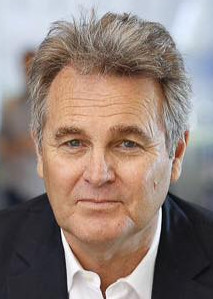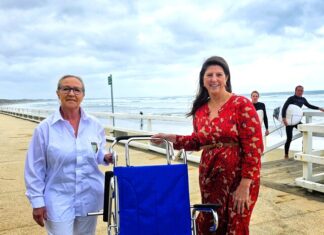By Luke Voogt
Australians on the move are driving population growth in Geelong and the Surf Coast as Melbourne experiences an overseas immigration boom.
Fifty-four per cent of greater Geelong’s net population growth of 6195 people in the last financial year was from “internal migration”, according to latest Australian Bureau of Statistics data.
Australians accounted for about 63 per cent of the Surf Coast Shire’s growth, the data showed.
New arrivals favoured Melbourne over Geelong because it lacked an existing “critical mass” of immigrants, said prominent Australian demographer Bernard Salt.
“(Regional cities) are not popular destinations for international migrants,” he said.
Major cities had the largest concentration of expats whose lingual, religious, family and tribal connections attracted migrants, Mr Salt explained.
“People tend to congregate into communities they feel comfortable.”
Towns like Torquay were Anglo-dominated by “happenstance, not discrimination,” Mr Salt said.
“British-Anglo people speaking to their British-Anglo friends in Torquay might think, ‘That’s a nice place to live.’
“Torquay is Anglo-dominated now but in 2030s it could be, for example, a hot spot for the Spanish community.”
Aussies dominated the growth of Geelong’s fastest-growing suburb, Armstrong Creek, with 83 arriving from within Australia.
People required a secure job and stability before moving to new estates like Amrstrong Creek, Mr Salt said.
“If you’ve just arrived on the plane from Somalia your employment is less secure.
“You’re not at that stage of your life where you want to take on a mortgage and live in a specific community.
“Over time those communities become mixed.”
The area of Grovedale, which included Armstrong Creek in the ABS data, grew 7.6 per cent during 2016/2017.
Other major growth areas included Ocean Grove and Barwon Heads, which both grew 4.9 per cent, and Torquay, four per cent.
About 51 per cent moving to Geelong came from Melbourne which last year experienced an influx of migrants.
About 80,000 overseas migrants made up 64 per cent of Melbourne’s population boom of 125,000 last year.
Immigrants made up about 60 per cent of the total Victorian population increase of 144,357.
The majority of people moving to Geelong came from areas where overseas migrants were settling, including western and inner Melbourne, at 17 and 10 per cent respectively.
“International migrants come in through the main cities first,” Mr Salt said.
But the chief of Geelong multicultural services provider Diversitat said some of Geelong’s ethnic communities were doubling in numbers.
The Indian, Sri Lankan, Filipino, Thai, Chinese and Sikh communities had all experienced growth, Michael Martinez said.
“You’ll see massive increases in these communities.” he said.







